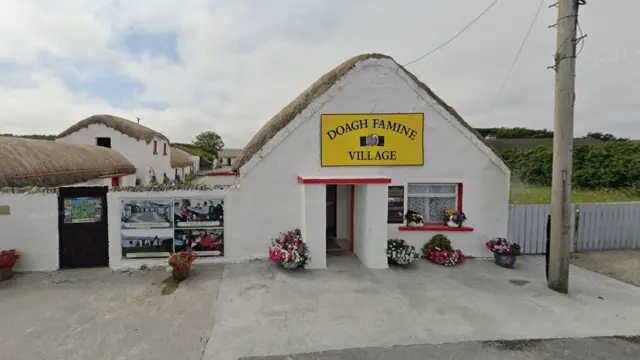In a remarkable display of resilience and solidarity, the community of Donegal has united to rebuild one of its most cherished tourist sites, the Doagh Famine Village, after a fire devastated part of the site last Saturday. The blaze, suspected to have started due to an overheating compressor, destroyed newer extensions of the attraction, including exhibits on the Peace Process and the traveller community.
Owner Pat Doherty, initially “devastated” and on the verge of abandoning the project, has found renewed hope in the overwhelming public support. “We will have to rebuild,” he told BBC News NI, “and hope we can get the stories back—maybe better the second time round.”
History and Heritage Lost

The fire spared the original famine-era structures, but key modern exhibits were completely lost, including an irreplaceable gypsy wagon and a reconstructed Orange Hall funded by lodges from Northern Ireland. “These items are lost to history,” Doherty said, mourning their cultural value.
Despite the damage, local fire brigades from Buncrana, Carndonagh, and Moville managed to protect the thatched cottages that form the historical core of the Wild Atlantic Way tourism destination. Gardaí have ruled out foul play following a technical examination.
Community to the Rescue
The community’s response has been nothing short of extraordinary. A neighboring tourist site, Wild Alpaca Way, launched a fundraiser that quickly approached its €100,000 goal. Local businesses and residents donated thousands of euros—including a 17-year-old who contributed most of his birthday money.
“A local shop donated €2,000 of its earnings. Another attraction gave us a cheque for €10,000,” Doherty revealed. He added, “We all depend on each other in Donegal—one attraction supports the others.”
More Than Just a Museum
The Doagh Famine Village, established in 1997 on the site of Doherty’s ancestral home, provides a powerful journey through Irish history—from famine-era hardship to the modern peace process. It has become a vital part of Ireland’s cultural heritage and a major educational site for visitors.

With construction firms volunteering to clear the damage and locals lining up to help, Doherty hopes to reopen by the end of the summer. “It’s all for peace. I haven’t met a loyalist or a republican who doesn’t want a better world,” he emphasized.
Rebuilding with Purpose
Though uninsured due to traditional thatched roofing, the site’s survival now hinges on community-driven restoration. Doherty is optimistic: “Maybe it’ll be a bit different, but it might even be better.”
As donations continue to pour in and volunteers lend their hands, the spirit of Donegal shines through as a model of unity in the face of loss.
Want to support? Visit the official Doagh Famine Village website or contribute through the Wild Alpaca Way fundraiser to help preserve a vital piece of Irish history.









